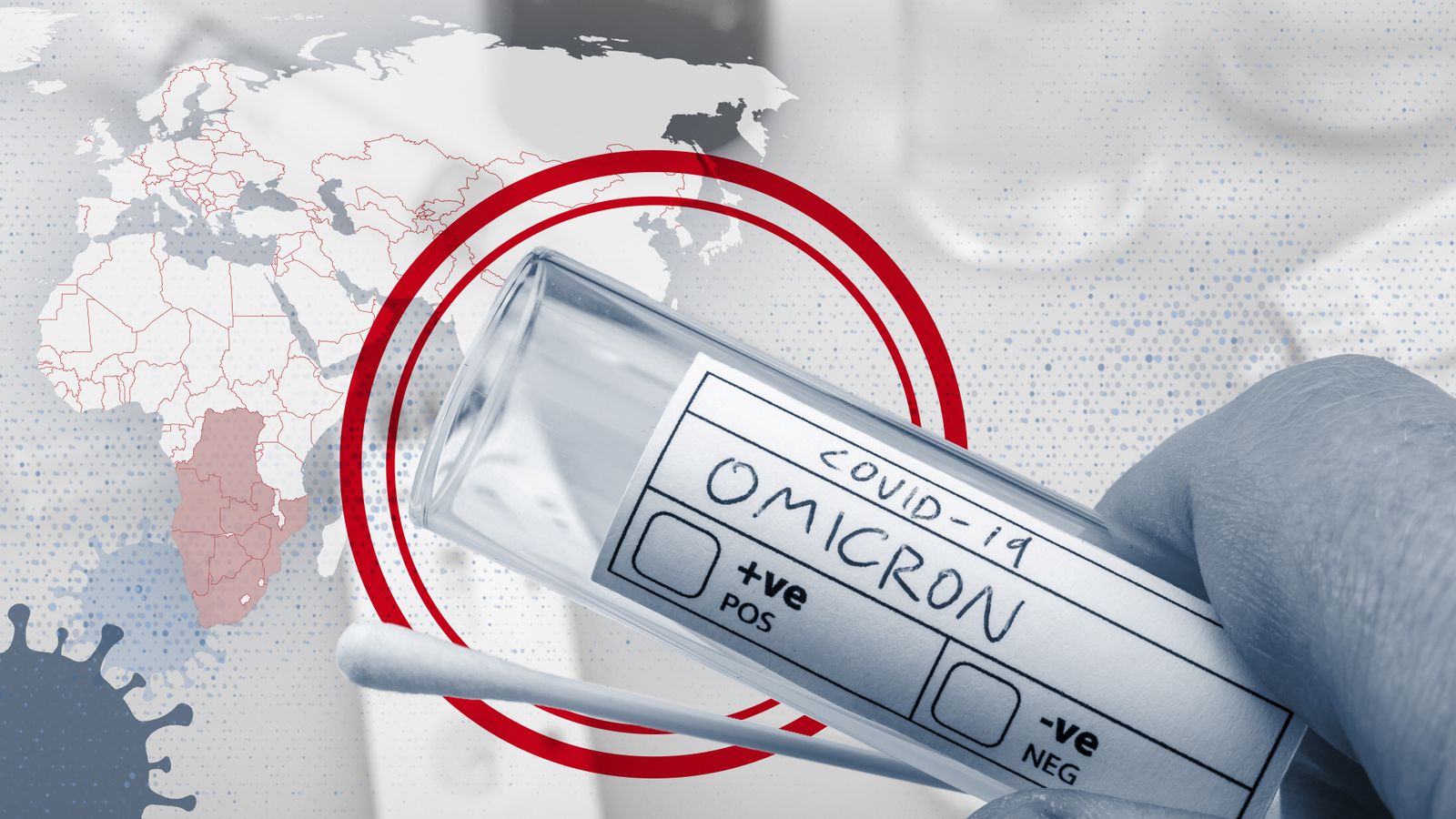As Boris Johnson told his cabinet on Tuesday morning, the early information around Omicron appears to suggest that the new variant is more transmissible than Delta – which for now remains dominant in the UK and around the world.
However, the other early indication is that it also seems to result in less severe disease and ultimately fewer hospitalisations per case, according to experts like Dr Anthony Fauci, chief medical advisor to the US president.
Again, this judgement is based on very early information that is subject to change, but it sounds like good news.
Sadly, it’s not that simple.
Even if the variant does prove to be less dangerous than Delta or other strains, a higher transmission rate can still have a real impact on public health and the number of people who become seriously ill.
Let’s explain why.
For the last month or so the UK has been hovering above and below about 40,000 new cases per day. The R rate – the number of new people infected by each person with an active infection – has also been hovering around 1.
This means each individual with COVID has given COVID to an average of one other person. That’s why the case-numbers have remained relatively static – the 40,000 people with COVID are giving COVID to about 40,000 new people, who are doing the same with 40,000 more people and the chain continues.
Over the same period, daily hospital admissions have been around 800. Meanwhile daily deaths have been around 135.
Put rather crudely, that means that about 1 in 50 people who get infected with the current dominant strain end up in hospital. Of those, about 1 in 6 sadly die. These ratios aren’t exactly perfect but they help with the maths later on so let’s work with them for now.
If the dominant Delta strain suddenly became half as dangerous overnight, while remaining exactly as transmissible as it has been, we would expect hospitalisations to drop to about 400 per day and remain there. 1 in 100 infections result in a hospitalisation. Deaths would end up just under 70.
However, if this new less dangerous variant was actually more transmissible, the impact in terms of the number of hospitalisations could end up worse.
A more transmissible variant has a higher R number. At the peak of the pandemic the R rate reached an upper estimate of about 1.5. That means that every 10 people with COVID would infect 15 others, every 40,000 would infect 60,000.
As it keeps the maths pretty simple as well, we’re going to use that for our calculations – that’s not a measured estimate of what Omicron might force R to rise to, or even a loose guess.
Some scientists have estimated that it may rise above this level, but we don’t know yet. We’re just using it to try and explain the relationship.
So if the R rate was to suddenly rise to 1.5, while the ratio of hospitalisations and deaths stays at the lower level – half of what it has been for the past few months, let’s take a look at what that would mean for the health service and public health.
After about a week we’d expect the infection level to be about 60,000. If 1 in 100 go to hospital that’s 600. If one in 6 of these people die that’s 100 deaths. These are both lower than the current figures, so good news.
But, the nature of R means that each of these now 60,000 daily cases will also infect an extra 50% of people, so 60,000 cases would soon become 90,000, more than double the number we’re currently seeing – and it would keep growing.
Despite the variant being half as dangerous as the original one, 90,000 daily cases would result in around 900 people needing some hospital treatment and cause 150 deaths.
A week or so later, 135,000 cases would see about 1,350 hospitalisations and more than 200 deaths.
These numbers are entirely made up, and the facts as we have them at the moment are that we don’t know how much more transmissible Omicron is.
We know even less about whether it is less dangerous on a case-by-case basis.
But it would have to be less dangerous by a much greater degree than it is less transmissible if we are to avoid a rise in the number of people needing hospital care.
The maths on Omicron looks really horrible. Scientists have told Sky News that it probably accounts for 1% of cases right now – about 500 a day.
Delta is far more common. But the new variant is able to spread much faster, with the number doubling every three to four days. By the end of the year, we are likely to pass 100,000 cases a day.
From the first seeds of the outbreak being sown by returning travellers, it could take just six weeks for Omicron to become the dominant strain. Its exponential rise is down to its mutations.
On paper, they would help it infect cells more easily. And evidence considered by scientists on the government’s SAGE committee suggests airborne transmission may be more common than with previous variants.
The mutations also help Omicron evade our antibodies. Research from South Africa suggests the re-infection rate is three times higher than in previous waves. The wall of immunity that proved so solid against Delta isn’t looking so secure any more.
There is hope, though. While antibodies and T-cells from the vaccine or previous disease are less effective at stopping infection, they do still seem to protect against serious symptoms.
Cases in South Africa are generally milder than in the Delta wave. But hospital admissions are still rising. Even if just a small fraction of infections result in serious disease, high case rates mean lots of people still needing treatment.
The Omicron wave couldn’t come at a worse time for the NHS. Even in a normal year, the beginning of January is its busiest period. But this time hospitals may have to factor in the most infectious variant yet, soaring towards an eye-watering peak.






















